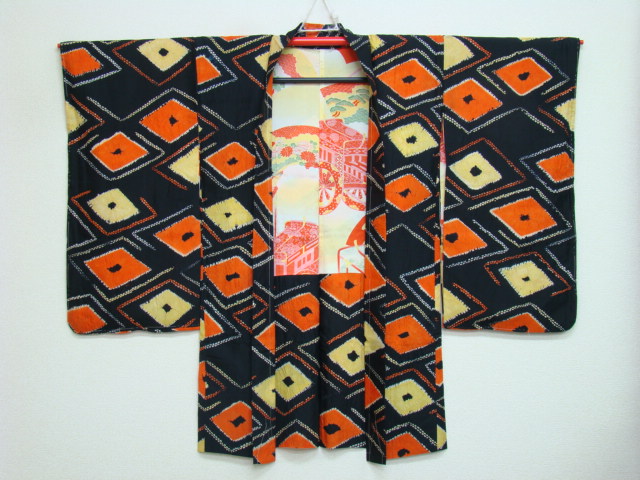Haori
| This article may require cleanup. The specific problem is: Some information is copied directly from an external site. Relevant discussion may be found on the talk page. Please help improve this article if you can. (March 2024) |
The haori is a piece of Japanese clothing cut like a kimono but shorter, varying in length from mid thigh to mid calf, worn over the kosode (a sort of robe) by both men and women. The haori has one layer of silk, like a kimono, and is lined with another layer of silk or cotton. It is loose-fitting and T-shaped. Unlike the kimono, the haori front does not overlap and is not secured by an obi, a type of sash. It is fastened at the center front by means of braided silk cords.
In history
Geisha, professional hostesses and entertainers, were the first women to wear haori over their kimono. During the seventeenth century geisha in the Fukagawa neighborhood of Edo, as Tokyo was then called, started to wear haori to assert their mastery and skill in the arts "like men." At first a radical fashion statement, within a century it was common to see women wear either haori over their kimono or hakama (full-cut trousers or a divided skirt) over their kimono, but not both. By this time the geishas were the only Japanese who would not wear the haori.
During the nineteenth century the haori became the chief garment for displaying the mon, or family crests, at occasions such as weddings and funerals. The mon are small, usually white logos that are simple decorative designs of natural symbols that families have adopted.
Haori, are of various lengths and widths, but most fall into the neighborhood of 50 inches wide by 30 inches long. Shorter ones are meant for domestic wear, whereas the longer ones are for more formal occasions. Length corresponds to formality. The kuro montsuki haori is a formal black silk or crepe haori that is meant for such formal occasions as graduations or mourning.
In Amtgard
Like most formal Japanese clothing, the haori is not common among Amtgardians, though it would not look out of place as court garb for a Japanese persona.
Links
- Walkthrough process of a costume-maker constructing a haori
